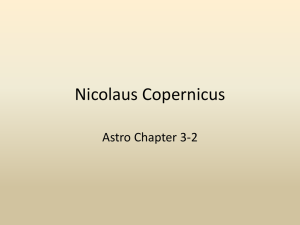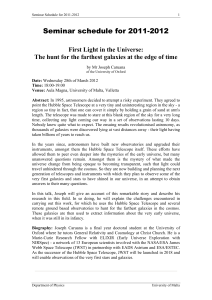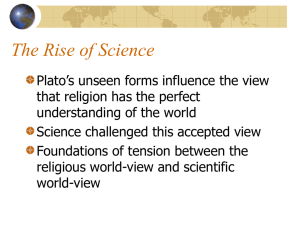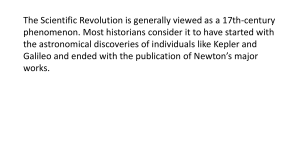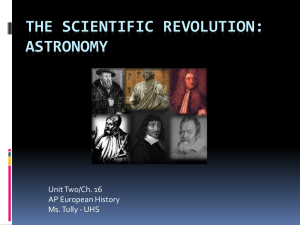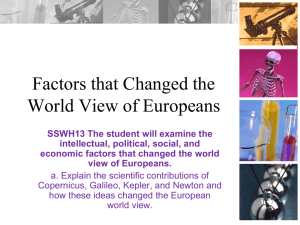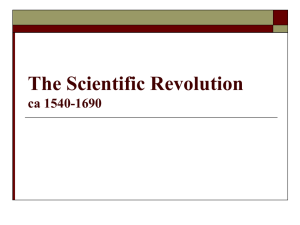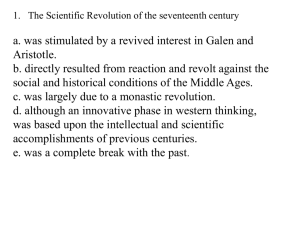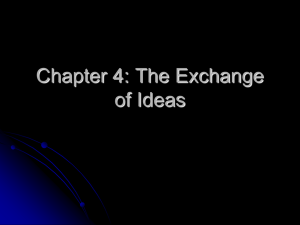Early Astronomers
advertisement
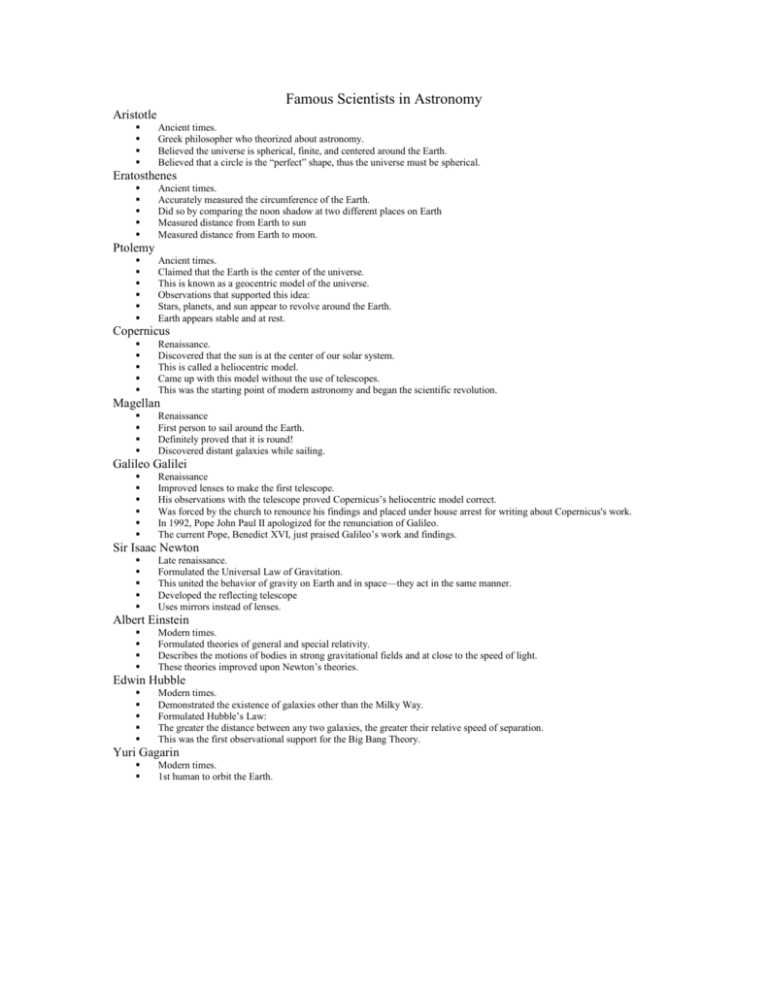
Famous Scientists in Astronomy Aristotle Ancient times. Greek philosopher who theorized about astronomy. Believed the universe is spherical, finite, and centered around the Earth. Believed that a circle is the “perfect” shape, thus the universe must be spherical. Eratosthenes Ancient times. Accurately measured the circumference of the Earth. Did so by comparing the noon shadow at two different places on Earth Measured distance from Earth to sun Measured distance from Earth to moon. Ptolemy Ancient times. Claimed that the Earth is the center of the universe. This is known as a geocentric model of the universe. Observations that supported this idea: Stars, planets, and sun appear to revolve around the Earth. Earth appears stable and at rest. Copernicus Renaissance. Discovered that the sun is at the center of our solar system. This is called a heliocentric model. Came up with this model without the use of telescopes. This was the starting point of modern astronomy and began the scientific revolution. Magellan Renaissance First person to sail around the Earth. Definitely proved that it is round! Discovered distant galaxies while sailing. Galileo Galilei Renaissance Improved lenses to make the first telescope. His observations with the telescope proved Copernicus’s heliocentric model correct. Was forced by the church to renounce his findings and placed under house arrest for writing about Copernicus's work. In 1992, Pope John Paul II apologized for the renunciation of Galileo. The current Pope, Benedict XVI, just praised Galileo’s work and findings. Sir Isaac Newton Late renaissance. Formulated the Universal Law of Gravitation. This united the behavior of gravity on Earth and in space—they act in the same manner. Developed the reflecting telescope Uses mirrors instead of lenses. Albert Einstein Modern times. Formulated theories of general and special relativity. Describes the motions of bodies in strong gravitational fields and at close to the speed of light. These theories improved upon Newton’s theories. Edwin Hubble Modern times. Demonstrated the existence of galaxies other than the Milky Way. Formulated Hubble’s Law: The greater the distance between any two galaxies, the greater their relative speed of separation. This was the first observational support for the Big Bang Theory. Yuri Gagarin Modern times. 1st human to orbit the Earth.

